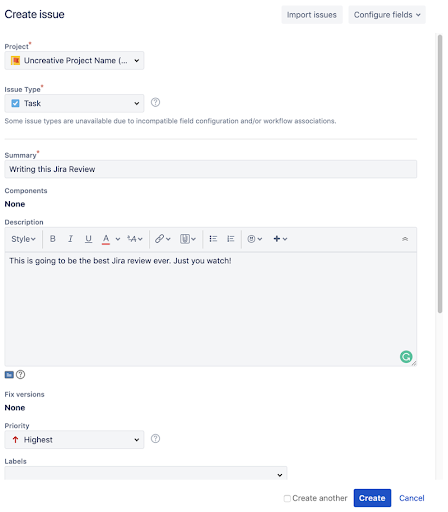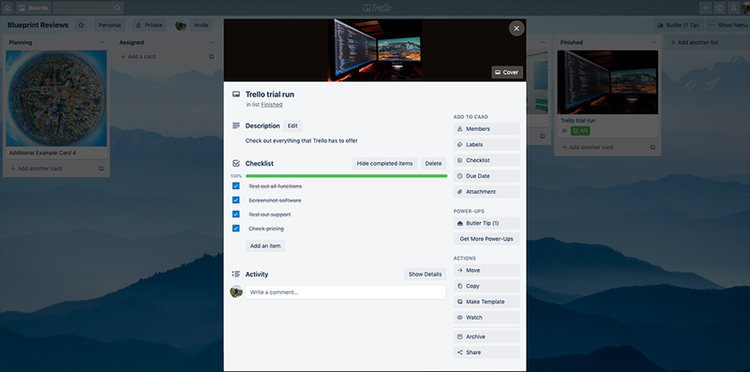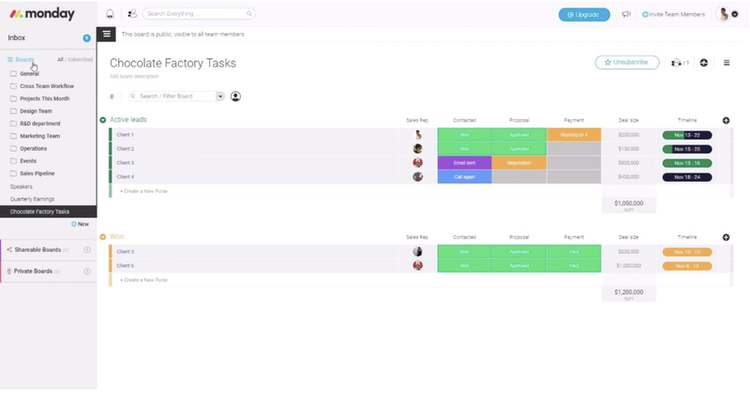Team collaboration can be the difference between a hyperproductive organization and one that can’t get out of its own way. We all know how important collaboration and communication are, but getting it right remains one of the biggest challenges in talent management.
The surge in work-from-home arrangements adds a new dimension to getting collaboration right and makes the technology side of things even more important. Consider these eight strategies to boost collaboration within your organization.
1. Start at the top
Good communication and collaboration start with open conversations. Speaking up has negative consequences in many corporate environments.
These consequences may not result in reprimands or write-ups, but rather in being seen as a complainer or squeaky wheel that slows down progress. This is particularly true in cultures with a rigid hierarchy.
If you want your workplace culture to foster collaboration, make sure it starts at the top. Leaders must actively communicate and actively listen to real, possibly tough, criticism, taking it in stride.
If team members see leadership is willing to openly communicate and debate ideas based on merits, with no negative repercussions, they’ll be more likely to buy into a collaborative culture.
The idea of “radical transparency” from billionaire Ray Dalio is an excellent case study here. Dalio allows team members to critique his performance openly and encourages the entire team to do the same.
Tip: Never let a conversation around ideas and performance devolve into attacks on people. The way to encourage people to speak up, is to build a culture where they won’t feel attacked for it.
2. Make collaboration easy
“My door is always open” is a popular saying for a reason. When people are approachable, literally and figuratively, you’ll experience less friction around communication. Removing the friction around face-to-face conversation is one thing, but technology plays a role too.
Face to face isn’t possible or practical in many situations. This is where tools like instant messaging, video conferencing, and email come into play. Make sure the tools your team uses are simple and don’t add friction to collaboration.
Tip: Use synchronous communication, like face-to-face meetings, video calls, phone calls, and instant messaging instead of email when practical. The back and forth of synchronous communication helps humanize conversations and build comradery.
3. Encourage questions
Brilliant ideas, new innovations, and better business processes are often sparked by a single good question. Encourage your team to ask questions -- they can lead to your next breakthrough and healthy debate around current ways of doing things.
A good place to start is to do it yourself. Ask for opinions or why a task gets done a certain way, and actively listen to the response. One why can lead to another, and everyone involved can gain a more robust understanding.
Tip: If you want good questions, give good answers. Experienced team members may be quick to respond with something like “that’s how we’ve always done it and it works”, but that approach can hamstring collaboration. Take the time to explain the “why” when questions are asked.
4. Resolve conflicts quickly and fairly
Conflict resolution is a core tenet of project management and one of the toughest aspects of HR management. Invariably, conflict will arise within a team. Don’t sweep it under the rug. Festering conflict breeds silos and team members avoiding one another, the exact opposite of collaboration.
When a conflict arises between two or more team members, try to get to the root of the problem and find a fair resolution quickly. This can stop minor disagreements from becoming major roadblocks to productivity.
Tip: Have a process in place for formal conflict resolution, but don’t escalate to that immediately. Aim to resolve conflicts informally by talking it through with both sides.
5. Focus on team goals, not individual performance
Measuring performance and employee evaluations are a big part of incentivizing and encouraging the behavior you want from team members. Want to encourage collaborative behaviors and build a truly collaborative team? Focus on team goals.
Case in point, suppose you were on a widget building team. If your performance evaluation was based solely on your ability to build widgets, would you care much about a struggling coworker?
Now think about how your incentives change if your performance is tied to team output of widgets instead. Chances are, you’ll be more likely to care about and communicate with your struggling teammates in the latter case.
Tip: Consider structuring bonuses based on team results rather than individual achievements.
6. Minimize invisible work
Reducing invisible work is easy to overlook. Invisible work is anything an employee works on that isn’t traceable. The problem with too much invisible work is that the team doesn’t see what people are doing, where they are struggling, and what problems are truly chewing up the most time.
Tracking what team members are working on increases your visibility and enables you to identify areas where group collaboration, brainstorming, or new business processes are needed. If you don’t know where time is being dedicated, you can’t optimize.
Tracking work in a visible way also makes it easier for team members to understand who to discuss problems with and identify areas where they can help.
Tip: Use project management software to track work and assess overall team productivity.
7. Crush silos
One of a project manager’s top responsibilities is to foster collaboration and effective communication. They must ensure team members are comfortable with cross functional communication and know where to ask the right questions.
If employees are hesitant to engage across teams, collaboration will suffer. Empower both W2 and contract employees to ask whatever questions are needed to get the job done.
Tip: Ensure the team knows who “owns” what aspect of a project. A big reason for silos is simply not knowing where to start.
8. Understand the personalities involved
Nowadays, a multigenerational workforce can collaborate together from anywhere in the world. That’s amazing, but it also means team members may have very different experiences and ideals influencing their preferences and personalities.
The right communication strategy for one team member, may not work well with another. Some employees may be averse to conflict or scared to speak up, while others may be very outspoken.
As a leader, you need the people management skills to understand how to play to team members’ strengths and build a culture that works across the board.
Tip: Don’t forget about your own personality. It can be easy for a leader to forget how they can influence others with their own behavior. Take a step back and evaluate how your own personality fits with the team from time to time.
Our favorite tools for promoting collaborative teams
True collaboration is more about people than software, but the right tools can go a long way. Software and workflows that make it hard to collaborate and share inherently build silos and discourage communication.
Conversely, software that simplifies teamwork can boost collaboration, foster communication, and break down silos.
This is especially true in a world where work from home is becoming the norm. Here are three top project management software tools to help you get the most out of your teams.
1. Jira
Atlassian’s Jira is an effective issue tracking and project management tool for both large and small teams. It’s extensible and workflows can be customized to meet varied requirements. It works well right out of the box.
Jira makes it easy to track work, increase visibility, and foster collaboration around specific issues. It integrates with Atlassian’s Confluence.

A Create Issue page from Jira displays a project name, issue type, summary, and description. Image source: Author
If you’re looking to couple task management software with wiki-style documentation, Jira and Confluence make a solid combination. I used Jira and Confluence at two different organizations, and they worked well for both teams.
2. Trello
Jira is a good option for software development and Agile teams, but it’s not for everyone. Atlassian, Jira’s parent company, recognizes that and offers Trello to address use cases that value simplicity.
Trello is a solid choice for teams that need simple and easy to use project management software. Trello supports intuitive Kanban boards, shared calendars, and Google Drive integrations that enable seamless collaboration.

A Trello checklist details all the steps of a task. Image source: Author
If you need a simple but effective project management tool to boost collaboration, Trello is a good starting point, and it offers a robust free tier.
3. monday.com
If you need a project management tool that offers a balance of features and ease of use, take a look at monday.com a.k.a. “the Work OS”. The lower tiers are somewhat limited, but Pro and Enterprise tiers offer robust functionality without sacrificing usability.

A Monday board detailing “Chocolate Factory Tasks”. Image source: Author
In addition to a variety of integrations and collaboration features, monday.com natively supports budget management, which isn’t always a given. If you can afford the Pro tier or higher, monday.com is worth a look.
Remember: collaboration is about people first
Technology can enable team collaboration, but it’s up to you to nail the interpersonal side. Build a culture that values collaboration and provide the right tools to collaborate with, and you can make your team a productivity machine.
Our Small Business Expert
We're firm believers in the Golden Rule, which is why editorial opinions are ours alone and have not been previously reviewed, approved, or endorsed by included advertisers. The Ascent, a Motley Fool service, does not cover all offers on the market. The Ascent has a dedicated team of editors and analysts focused on personal finance, and they follow the same set of publishing standards and editorial integrity while maintaining professional separation from the analysts and editors on other Motley Fool brands.